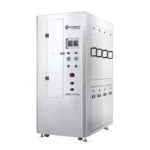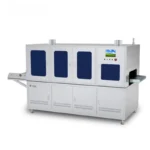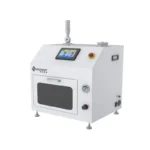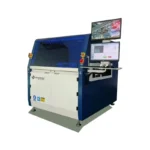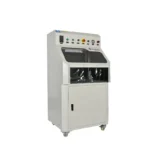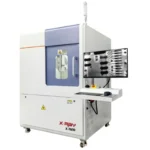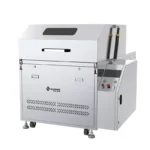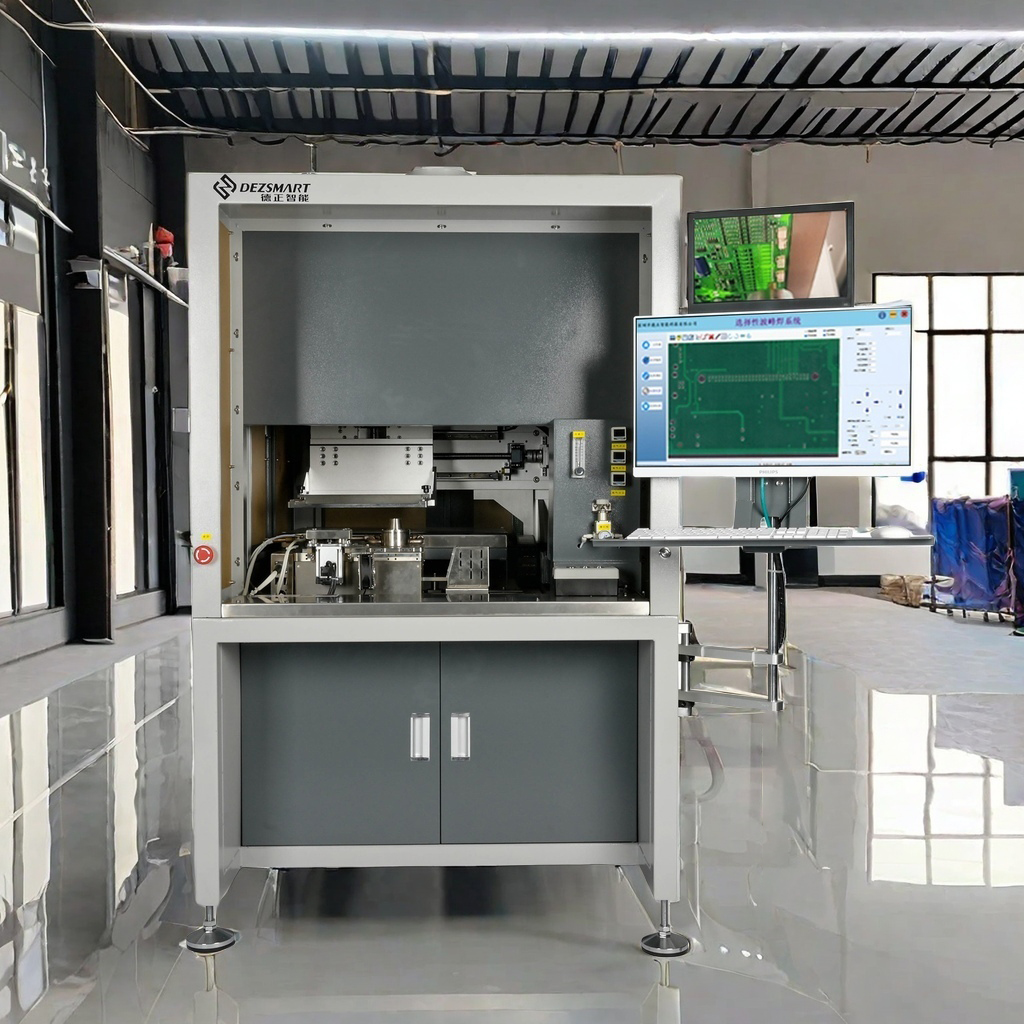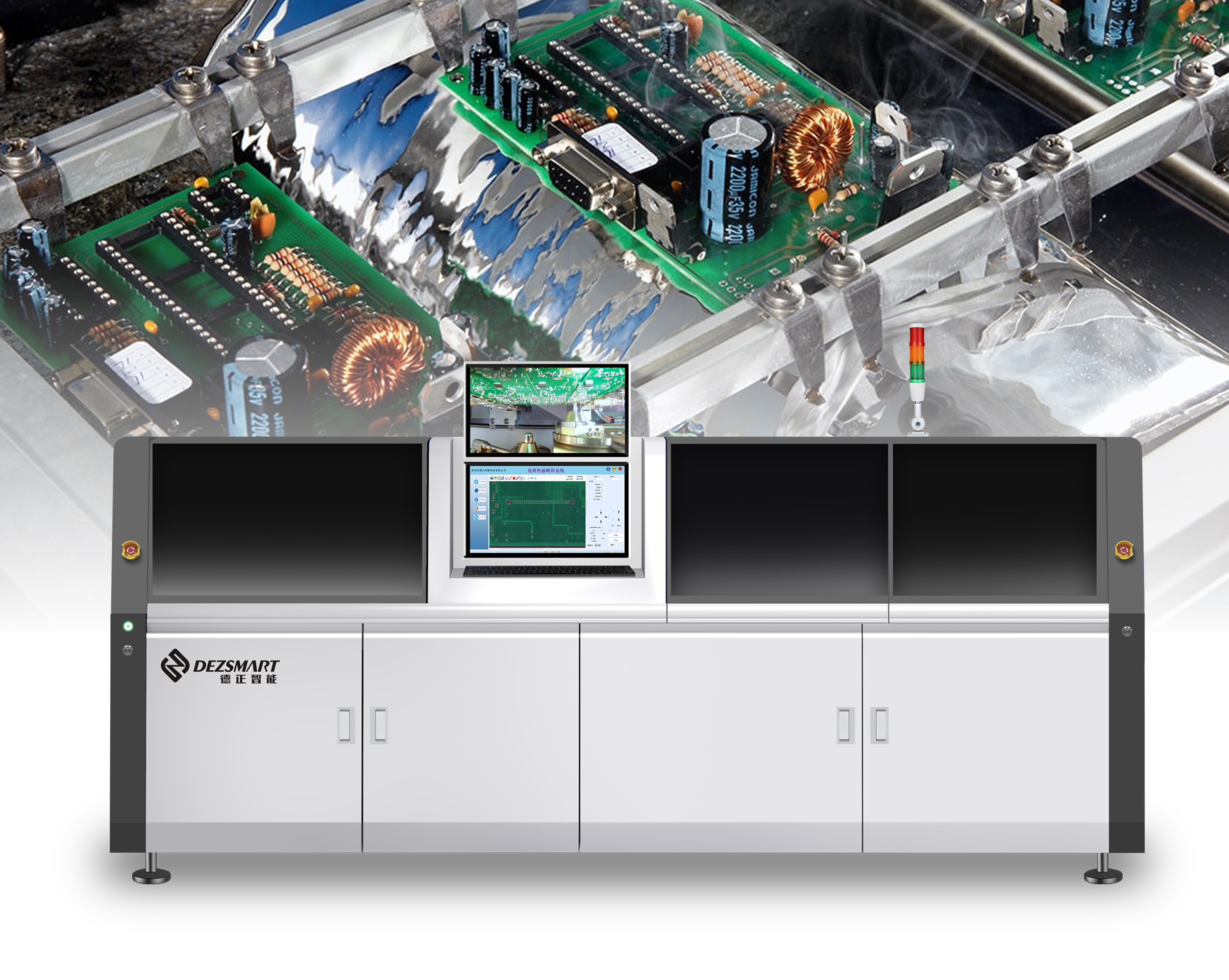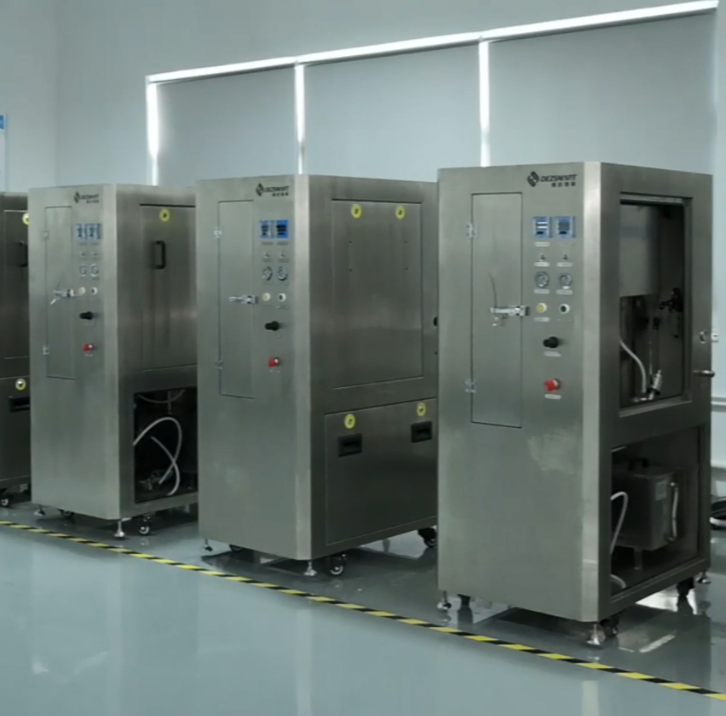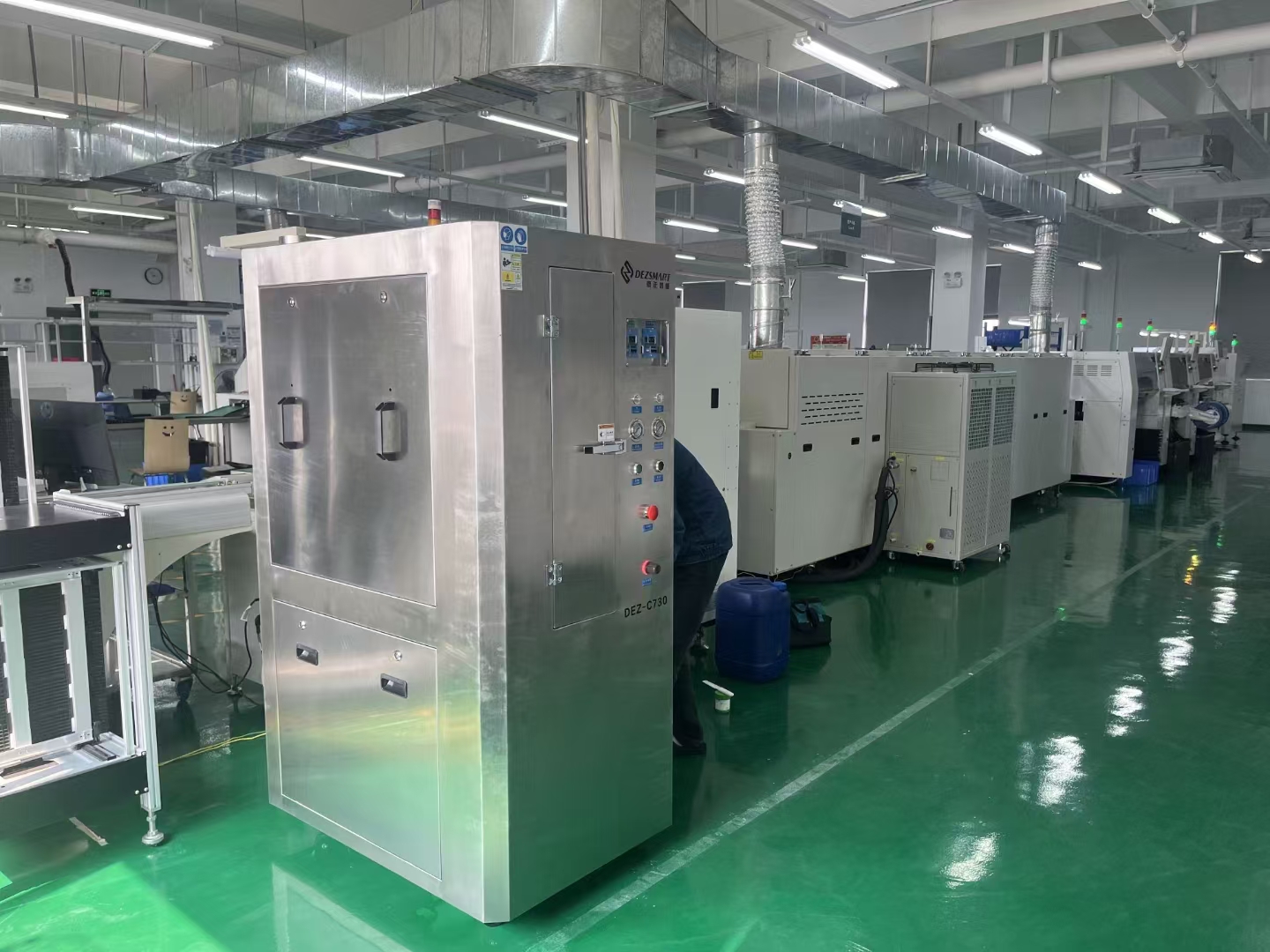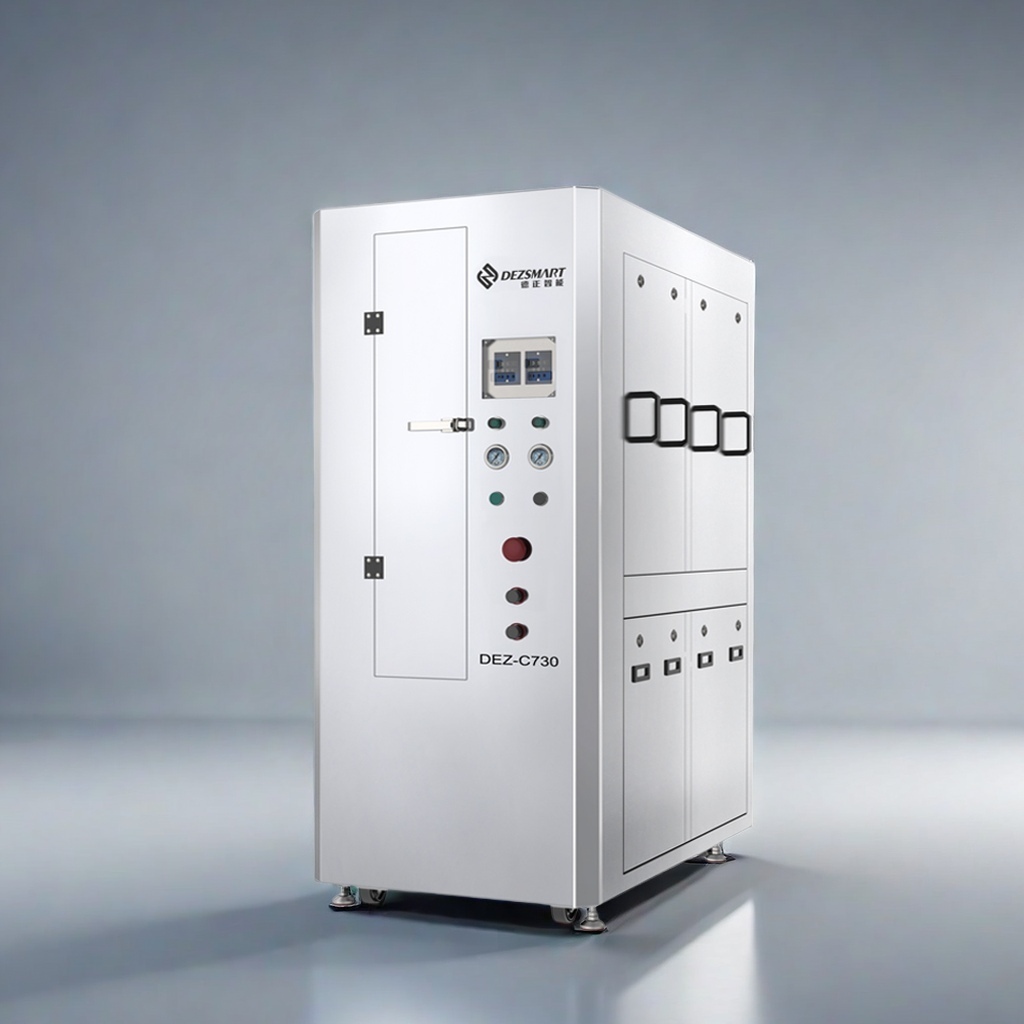En la industria de fabricación electrónica, la soldadura selectiva, con su precisión y flexibilidad, se ha convertido en un proceso clave para la soldadura de placas de circuito impreso. Sin embargo, muchos profesionales se enfrentan a una pregunta clave a la hora de configurar un equipo de soldadura selectiva: ¿es necesario un generador de nitrógeno? Este artículo profundizará en la estrecha relación entre los equipos de soldadura selectiva y los generadores de nitrógeno, así como en el papel fundamental que desempeña el nitrógeno en el proceso de soldadura, proporcionando una referencia profesional para los fabricantes de electrónica en la selección de equipos.
1.El principal reto de la tecnología de soldadura selectiva: la oxidación.
La soldadura selectiva utiliza el calentamiento localizado para soldar juntas de soldadura específicas en una placa de circuito. De este modo se evitan eficazmente los daños en los componentes sensibles al calor causados por procesos por lotes como la soldadura por ola, lo que la hace especialmente adecuada para procesar placas de circuitos complejas que contienen componentes de precisión como BGAs y CSP. Sin embargo, en la producción real, reacciones de oxidación a altas temperaturas siguen siendo un factor clave que limita la calidad de la soldadura.
Cuando la soldadura (ya sea la aleación tradicional de estaño-lead o la soldadura sin lead respetuosa con el medio ambiente) se calienta a un estado fundido de 200-300°C, su superficie reacciona rápidamente con el oxígeno del aire, formando una densa película de óxido. Esta película de óxido plantea tres problemas: En primer lugar, reduce la fluidez de la soldadura, lo que da lugar a juntas de soldadura frías en las que la soldadura no puede llegar a la almohadilla; en segundo lugar, la escoria de óxido resultante obstruye la boquilla de soldadura, lo que obliga a parar la máquina y limpiarla cada ocho horas, lo que repercute gravemente en la eficiencia de la producción; y en tercer lugar, las impurezas producidas por la oxidación reducen la conductividad de la junta de soldadura, lo que hace más probable que se produzcan fallos de contacto en entornos con vibraciones.
Las estadísticas del sector muestran que los defectos de soldadura inducidos por la oxidación representan 62% de la tasa total de defectos en soldadura selectiva. En el sector de la electrónica del automóvil, la oxidación aumenta los costes de reprocesado en una media de 18%. Por este motivo, abordar los problemas de oxidación se ha convertido en un objetivo central de la optimización de procesos en escenarios de producción de alta fiabilidad.
2.Generador de nitrógeno: Un arma contra la oxidación para la soldadura selectiva
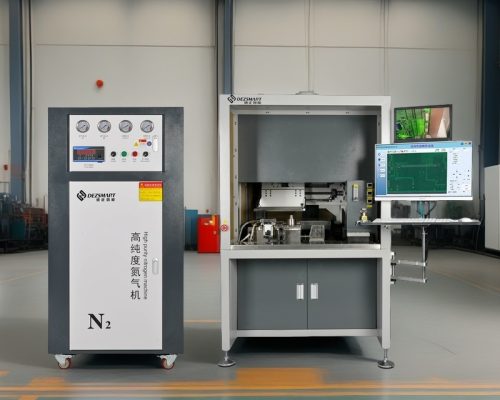
Como sistema auxiliar estándar para equipos de soldadura selectiva, la función principal de un generador de nitrógeno es proporcionar un entorno de nitrógeno de alta pureza para la zona de soldadura. Mediante la tecnología de adsorpción por oscilación de presión PSA o de separación por membrana, el generador de nitrógeno extrae nitrógeno con una pureza de hasta el 99,999% directamente del aire y lo suministra con precisión a través de tuberías a la zona que rodea la boquilla de soldadura, creando una zona localizada libre de oxígeno.
Para los fabricantes, la implantación de un generador de nitrógeno ofrece tres ventajas directas: En primer lugar, mejora el rendimiento de las soldaduras. Los datos de un fabricante de electrónica de automoción muestran que la implantación de la protección con nitrógeno redujo la tasa de uniones soldadas defectuosas de 3,2% a menos de 0,5%. En segundo lugar, se han reducido los costes de mantenimiento de los equipos: los ciclos de limpieza de las boquillas se han ampliado de 8 a 72 horas, con lo que se han ahorrado más de 200 tiempos de inactividad al año. Por último, una mejor utilización del material: la reducción de la escoria disminuye la pérdida de soldadura en aproximadamente 15%. Desde un punto de vista técnico, las propiedades inertes del nitrógeno le permiten excluir eficazmente el oxígeno de la zona de soldadura (controlando los niveles de oxígeno por debajo de 50 ppm), evitando así las reacciones de oxidación en el origen. Este enfoque de "aislamiento del gas en lugar de limpieza posterior" se ha convertido en la norma para los procesos de soldadura selectiva de gama alta.
3.El papel específico del nitrógeno en la soldadura selectiva
a.Prevención de la oxidación de la soldadura:
Sin protección de nitrógeno, la soldadura fundida puede oxidarse a una velocidad de hasta 0,3μm por segundo, lo que equivale a la formación de una capa de óxido de aproximadamente 1μm de espesor por junta de soldadura. Una atmósfera de nitrógeno, sin embargo, puede reducir el contenido de oxígeno por debajo de 0,005%, reduciendo la velocidad de reacción de oxidación en más de 99%.
En la producción real, puede observarse que la soldadura fundida bajo protección de nitrógeno mantiene un brillo blanco plateado, mientras que la soldadura expuesta al aire se vuelve rápidamente gris-negra. Esta diferencia visual se debe a una diferencia significativa en la estructura del compuesto intermetálico (IMC) dentro de la unión soldada. La capa de IMC formada en un entorno sin oxígeno es más uniforme y densa, con un grosor dentro del rango ideal de 2-4μm, mientras que la capa de IMC formada en un entorno oxidante presenta grietas y huecos.
b.Mejora de la humectabilidad de la unión soldada:
Una humectabilidad inadecuada es la causa principal de las "juntas de soldadura falsas", que se manifiestan por la formación de "bolas" de soldadura en la almohadilla en lugar de extenderse uniformemente. La protección con nitrógeno mejora la humectabilidad a través de dos mecanismos: en primer lugar, reduce la resistencia de la película de óxido a la extensión de la soldadura, reduciendo el ángulo de contacto de la soldadura de más de 60° a menos de 30°; en segundo lugar, reduce la tensión superficial de la soldadura. Los datos experimentales muestran que una atmósfera de nitrógeno puede reducir la tensión superficial de la soldadura de estaño-plata-cobre en aproximadamente 8%.
Esta mejora es especialmente crítica en la soldadura de juntas de alta densidad, como las de las placas base de los teléfonos móviles. Las pruebas realizadas por un fabricante de equipos de comunicaciones mostraron que la tasa de puenteo de las juntas de soldadura de 0,4 mm de paso se redujo de 12% a 1,3% tras activar el nitrógeno, lo que mejoró significativamente la fiabilidad del producto.
c.Reducción de la formación de bolas y puentes de soldadura:
La formación de bolas y puentes de soldadura son defectos críticos que pueden afectar negativamente al rendimiento del aislamiento de las placas de circuitos. El nitrógeno controla estos defectos mediante tres mecanismos clave: en primer lugar, su flujo de aire estable suprime las salpicaduras de soldadura, reduciendo el número de bolas de soldadura en más de 70%; en segundo lugar, mejora la fluidez de la soldadura, permitiendo una formación más precisa de las juntas de soldadura; y en tercer lugar, acelera el enfriamiento de la soldadura (la conductividad térmica del nitrógeno es 1,2 veces la del aire), acortando el tiempo de flujo de la soldadura líquida. Esta función es especialmente importante en la producción de placas de circuitos ECU de automoción. Después de que un fabricante adoptara la protección con nitrógeno, el número medio de bolas de soldadura por placa se redujo de 15 a menos de 3, eliminando por completo el problema de los fallos en las pruebas funcionales causados por las bolas de soldadura.
d.Mejora del aspecto y la fiabilidad de las uniones soldadas:
Bajo la protección del nitrógeno, las juntas de soldadura presentan un color blanco plateado uniforme, sin defectos cosméticos como agujeros y abolladuras. Y lo que es más importante, sus propiedades mecánicas mejoran significativamente: la resistencia al cizallamiento por tracción aumenta aproximadamente 10%, y en las pruebas de ciclos de temperatura de -40°C a 125°C, el ciclo de fallo de la unión soldada se amplía de 500 ciclos a más de 1.500 ciclos.
En ámbitos en los que se requieren ciclos de vida largos, como los device médicos, esta mejora de la fiabilidad se traduce directamente en competitividad del producto. Los datos de seguimiento de un fabricante de monitores muestran que los índices de fallos de campo de los productos soldados con nitrógeno se han reducido en 65% y las reclamaciones de los clientes en 72%.
4.Puntos clave para seleccionar un generador de nitrógeno para equipos de soldadura
a.Pureza del nitrógeno:
Las distintas aplicaciones requieren diferentes niveles de pureza del nitrógeno: la pureza 99,99% (cuatro nueves) es aceptable para la electrónica de consumo, mientras que la pureza 99,999% (cinco nueves) es necesaria para la electrónica del automóvil, la industria aeroespacial y otros campos. Una pureza insuficiente puede comprometer el efecto protector: cuando el contenido de oxígeno supera las 100 ppm, el efecto de inhibición de la oxidación se debilita considerablemente.
Al seleccionar un generador de nitrógeno, tenga en cuenta su estabilidad de pureza. Los equipos de alta calidad deben ser capaces de mantener una fluctuación de pureza no superior a 0,001% con una fluctuación de la presión de entrada de ±10%. También se recomienda un monitor en línea del contenido de oxígeno para controlar en tiempo real la eficacia de la protección.
b.Caudal de nitrógeno:
Los cálculos del caudal tienen en cuenta tres parámetros: el volumen del área de soldadura, la velocidad de soldadura y la separación entre placas. Por lo general, una sola boquilla de soldadura requiere un caudal de nitrógeno de 10-20 L/min. Las boquillas múltiples deben apilarse de acuerdo con el número real de boquillas. Un caudal insuficiente puede lead provocar infiltraciones de aire, mientras que un caudal excesivo se traduce en despilfarro (cada aumento de 10 L/min en el caudal incrementa los costes operativos anuales en aproximadamente 3.000 yuanes).
Los generadores de nitrógeno inteligentes disponen de ajuste automático del flujo, adaptando el suministro de nitrógeno al proceso de soldadura en tiempo real, lo que ahorra 20-30% energía en comparación con los sistemas de flujo fijo.
c.Estabilidad y fiabilidad del equipo:
El tiempo medio entre fallos (MTBF) del generador de nitrógeno debe ser de al menos 8.000 horas, y los componentes principales (como las torres de adsorpción y las electroválvulas) deben ofrecer una garantía de al menos tres años. Para las fábricas que operan a varios turnos, se recomienda un sistema conmutable de doble torre para evitar fluctuaciones de pureza durante la regeneración de una sola torre.
La facilidad de mantenimiento es igualmente importante. Elija un modelo con un largo intervalo de sustitución del filtro (al menos 3.000 horas) y una interfaz user intuitiva. Una comparación en el DEZSMART fábrica demostró que los generadores de nitrógeno de bajo mantenimiento reducían las horas-hombre de mantenimiento en 50%.
